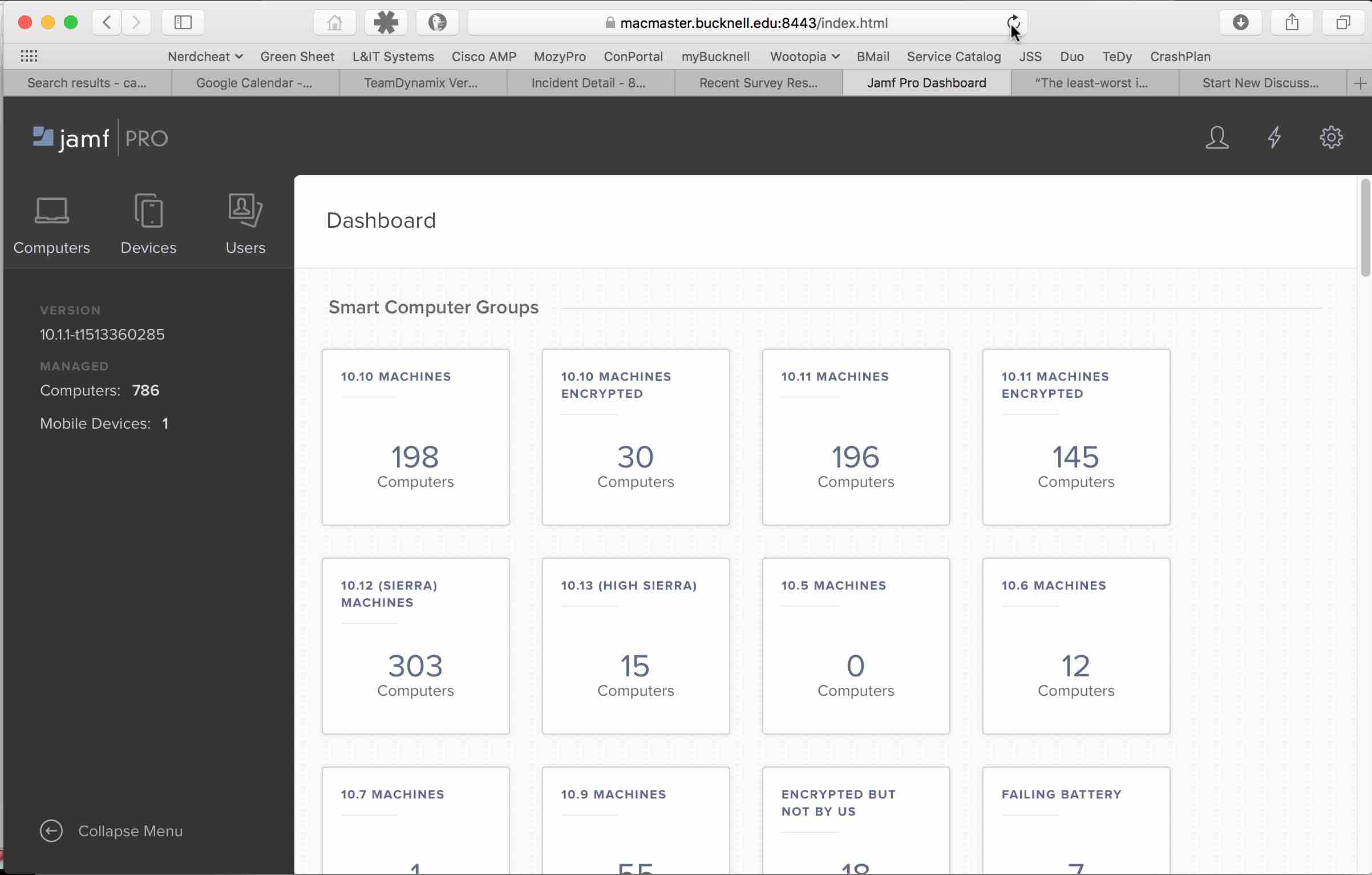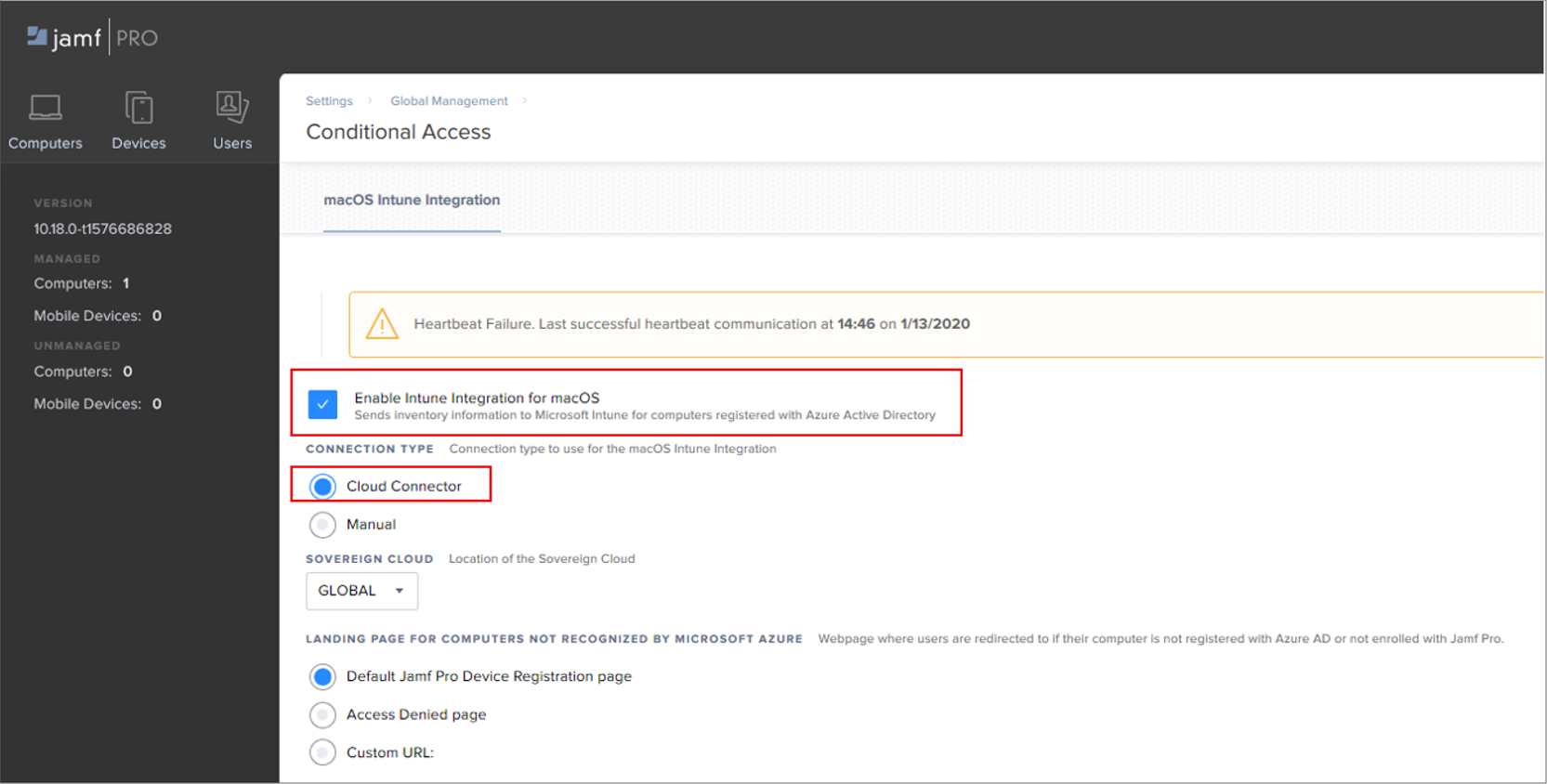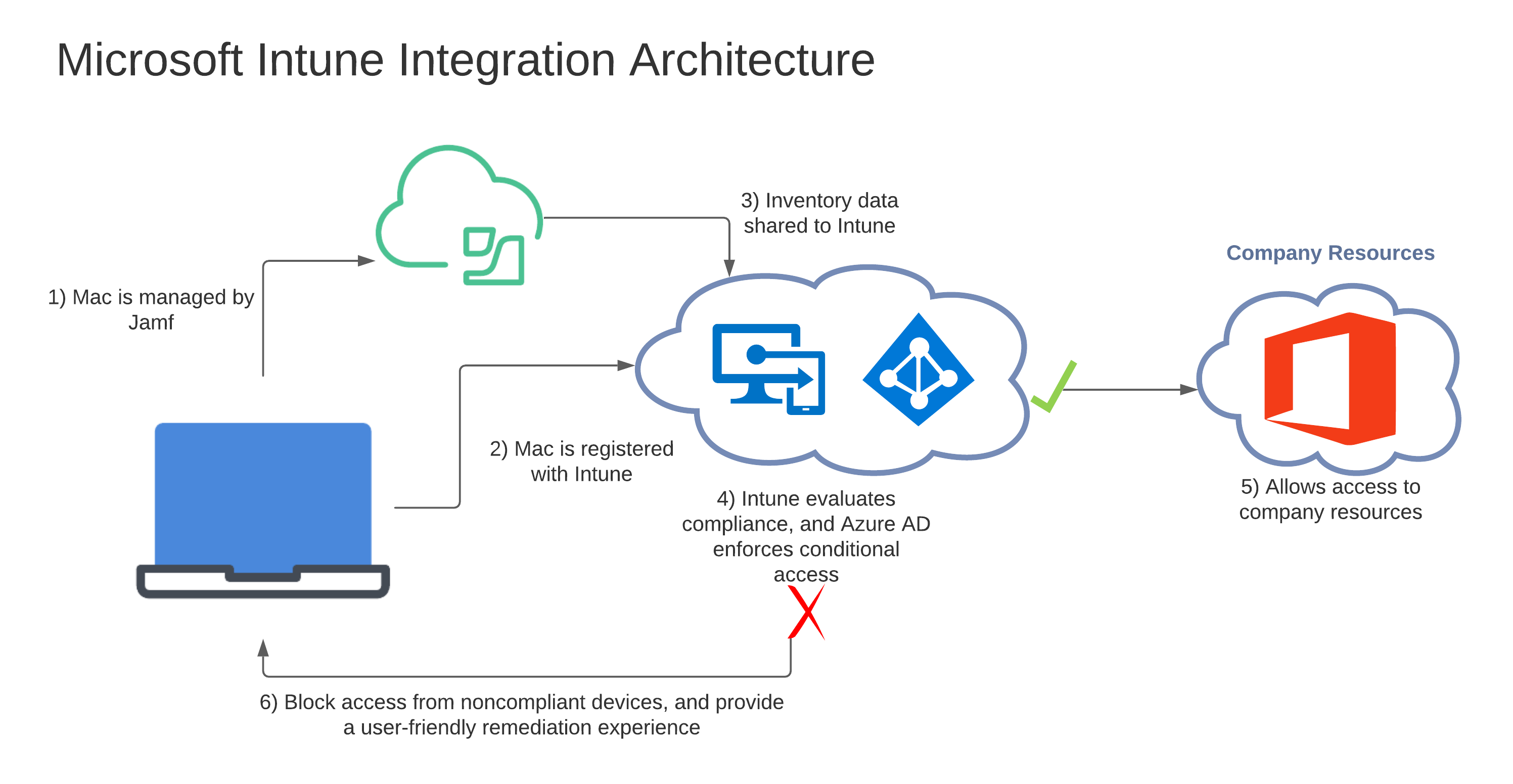

- #JAMF PRO INTUNE HOW TO#
- #JAMF PRO INTUNE INSTALL#
- #JAMF PRO INTUNE FULL#
- #JAMF PRO INTUNE REGISTRATION#
- #JAMF PRO INTUNE DOWNLOAD#
The policy runs on scoped devices the next time the selected trigger occurs on the computer and the criteria in the General payload is met.Ĭreate a policy in Jamf Pro to have users register their devices with Azure Active DirectoryĪfter you deploy the Company Portal for macOS through Jamf Pro Self-Service, you can create the Jamf Pro policy that registers a user's device with Azure AD.ĭevice registration requires a device user to manually select the Intune Company Portal app from within Jamf Self Service. Select the Scope tab to specify on which computers the Company Portal app should install.
#JAMF PRO INTUNE INSTALL#
Select Install from the Action pop-up menu. Select Add to select the package with the Company Portal app. Select the Packages payload and select Configure.
#JAMF PRO INTUNE DOWNLOAD#
On a macOS device, download but don't install the current version of the Company Portal app for macOS. To complete the following procedure, you need access to a macOS device and the Jamf Pro portal.

Create this policy before you create policy in Jamf Pro for users to register devices with Azure AD. This policy deploys the company portal app so that it's available in Jamf Self Service.

Deploy the Company Portal app for macOS in Jamf ProĬreate a policy in Jamf Pro to deploy the Intune Company Portal.
#JAMF PRO INTUNE FULL#
Intune requires full disk encryption to be compliant. Jamf integration with Intune doesn't support compliance policy that targets device groups. Use the available options to configure which Azure Active Directory (Azure AD) users and security groups receive this policy. On the policies Overview pane, select Assignments. Configure Settings and Actions for noncompliance to meet your organizational requirements, and then select Create to save the policy. To create a new policy, select Create Policy and then specify details for a policy with a Platform of macOS. If you're using a previously created policy, select that policy in the admin center and then go to the next step of this procedure. Sign in to the Microsoft Intune admin center. Set up device compliance policies in Intune Information is shared for only those Mac devices that have completed. After device registration completes, inventory data collected by Jamf Pro for that device is shared with Intune.
#JAMF PRO INTUNE HOW TO#
Manually configure integration of Jamf Pro with IntuneĪfter integration is configured, device users learn about Jamf Pro and Intune integration through either a communication from your IT department about how to register a device, or by discovering the Intune Company Portal app that you deploy through Jamf Pro Self Service.Recommended - Use the Jamf Cloud Connector to integrate Jamf Pro with Intune.Intune supports two methods to integrate Jamf Pro, which you configure separately from the procedures in this article: The procedures in this article require access to both the Intune and Jamf Pro consoles. Device registration establishes an identity in Azure AD that allows the device to be evaluated by Conditional Access policies for access to company resources. Configure devices to register with Azure AD when the device user signs in to the Company Portal app they start from within the Jamf Self Service app.Configure Jamf Pro to deploy the Intune Company Portal app to devices you manage with Jamf.This article can help you with the following tasks: Īfter you integrate Jamf Pro with Intune, configure Intune compliance policies and Azure Active Directory (Azure AD) Conditional Access policies to enforce compliance of macOS devices with your organizational requirements. For more information, see the blog post at. If you need help, contact Jamf Customer Success. If you use Jamf Pro’s Conditional Access integration for macOS devices, follow Jamf’s documented guidelines to migrate your devices to Device Compliance integration at Migrating from macOS Conditional Access to macOS Device Compliance – Jamf Pro Documentation. Jamf macOS device support for Conditional Access is being deprecated.īeginning on September 1, 2024, the platform that Jamf Pro’s Conditional Access feature is built on will no longer be supported.


 0 kommentar(er)
0 kommentar(er)
